Bitcoin
Donald Trump says he wants all future bitcoin to be mined in the U.S.
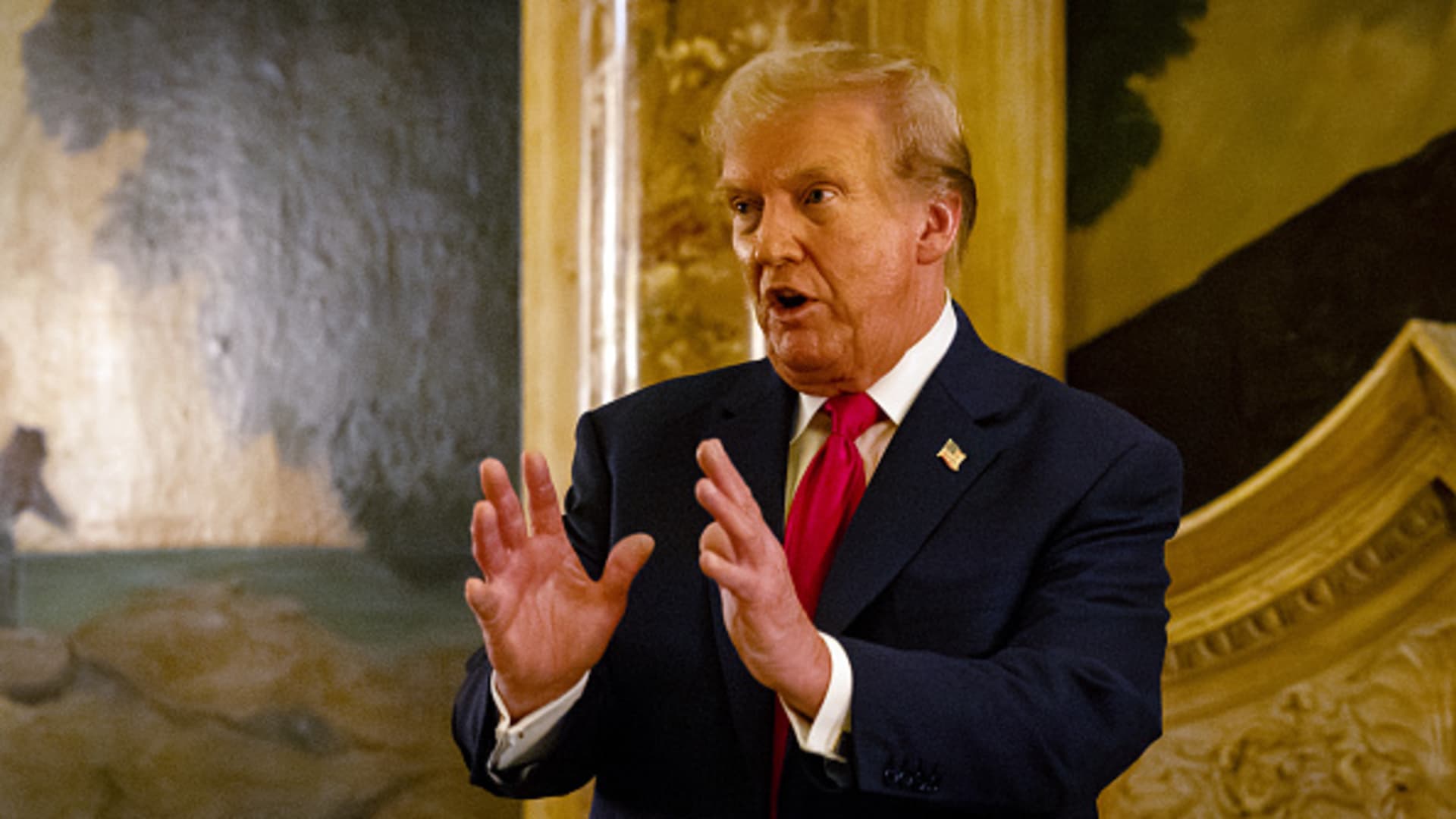
Former U.S. President Donald Trump speaks at a dinner at Mar-a-Lago on June 5, 2024 in West Palm Beach, Florida. Now that his criminal trial in New York has wrapped up, the former president has scheduled a number of fundraising events around the country to aid his presidential bid. (Photo by Eva Marie Uzcategui/Getty Images)
Eva Marie Uzcategui | Getty Images
This past Tuesday night in Palm Beach, Florida, about a dozen bitcoin mining executives and experts sat down with former president Donald Trump for an hour and a half in a small tea room at the Mar-a-Lago Club. As a steady drizzle fell outside, they sipped from Trump-branded water bottles and tried to sell him on the world’s largest cryptocurrency by market capitalization.
The meeting marked the first time the former president and presumptive Republican presidential nominee — recently convicted of 34 felonies in New York — had taken a meeting with the technologists securing the $1.3 trillion bitcoin network.
The intimate gathering brought together a coalition of some of the biggest private and public American miners in the business, including representatives from Riot Platforms, Marathon Digital Holdings, Terawulf, CleanSpark, Core Scientific, Arkon Energy, Cholla Energy and Exacore.
CNBC spoke to half the miners who attended the closed door session on Tuesday, including the CEO of Riot Platforms. Jason Les told CNBC that one of the group’s top talking points was the fact that the U.S. is number one in a lot of things, and it should be number one at bitcoin, especially as the world’s top coin touches new all-time price highs this year. Bitcoin is up 160% to around $67,000 since June 2023.
Senator Bill Hagerty (R-Tenn.) — who is the ranking member on the Senate’s Banking Committee and Finance Subcommittee, as well as a vocal proponent of the digital asset industry broadly, and bitcoin mining in particular — was also there to help guide what participants described as a free-flowing and wide-ranging discussion on bitcoin, energy, job creation and the push to beat China in the artificial intelligence arms race.
Many agreed that the former president was collaborative, had well-informed questions and seemed genuinely interested in how bitcoin miners could help solve America’s energy deficit problem.
BTC Inc. CEO David Bailey, who organized the mining sit-down with Trump, says that the meeting is part of a larger push to support the former president’s bid to return to the White House.
“Our industry intends to make bitcoin and crypto a defining issue for the 2024 election,” Bailey said of the effort. “As an industry we are committed to raising over $100 million and turning out more than 5,000,000 voters for the Trump reelection effort.”
Less than four hours after Trump’s roundtable wrapped, the former president took to social media to extol the virtues of the bitcoin mining business.
“Bitcoin mining may be our last line of defense against a CBDC,” Trump posted shortly before midnight on Tuesday.
“Biden’s hatred of Bitcoin only helps China, Russia, and the Radical Communist Left. We want all the remaining Bitcoin to be MADE IN THE USA!!! It will help us be ENERGY DOMINANT!!!”
Bitcoin and some other cryptocurrencies are created through a process known as proof-of-work, in which miners around the world run high-powered computers that collectively validate transactions and simultaneously create new tokens.
The process requires heaps of electricity, leading miners to seek out the cheapest sources of power. Many have begun to set up shop in the U.S. in the last few years, much to the chagrin of a mix of mostly Democratic lawmakers, including Sen. Elizabeth Warren (D-Mass.).
“It’s such an easy issue for politicians,” in part because there is “no major ask that we have to change the rules or anything else,” Les, who runs a bitcoin mining company with a market cap of about $3 billion, told CNBC.
“We just want to be treated like everyone else,” Les added, noting that more than one in four people in the U.S. now owns bitcoin, according to a survey recently conducted by bitcoin financial services firm Unchained.
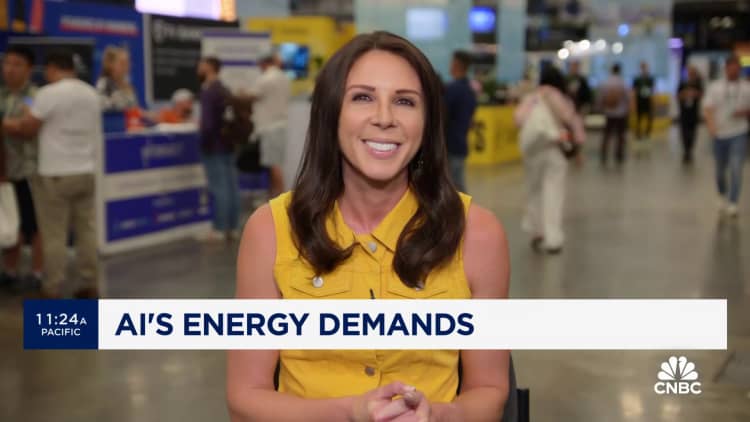
Bitcoin that’s “made in America”
For months, Trump — who recently launched his latest non-fungible token collection on the solana blockchain in April — has been making increasingly bullish comments on crypto.
He is now accepting digital currency donations and has pledged to defend the rights of those who choose to self-custody their coins, meaning that they don’t rely on a centralized entity like Coinbase to hold their tokens and instead, do it themselves in personal crypto wallets, which are sometimes outside the reach of the Internal Revenue Service. Trump also vowed at the Libertarian National Convention in Washington in May to keep Sen. Warren and “her goons” away from bitcoin holders.
In early June in San Francisco, technologists, crypto executives, and venture capitalists paid up to $300,000 per ticket to join a Trump fundraiser that ultimately raised more than $12 million.
And then on Tuesday, Trump declared that all future bitcoin will be minted in the U.S., should he return to the White House.
Geoff Kendrick, who heads up digital assets research at Standard Chartered, recently wrote that he expects bitcoin to reach the $100,000 price threshold as the U.S. approaches the November presidential election and $150,000 by the end of the year if Trump wins.
Read more about tech and crypto from CNBC Pro
Decentralization is a key feature of bitcoin, because it means the network isn’t controlled by any entity and can’t be shut down — even if a government disapproves. Roughly 37% of the bitcoin network’s miners are located in the U.S., with China closely following at 21% of bitcoin’s global processing power despite Beijing banning the practice in 2021.
“He wants to keep all of the remaining bitcoin mining in the U.S. and out of China,” Matthew Schultz, CleanSpark’s executive chairman and director, who attended the Mar-a-Lago working group, told CNBC. “For him to be legitimately engaged in the bitcoin industry, and understanding the way that mining works, was really awesome.“
The group also touched on doing more to support U.S.-made ASICs, short for Application-Specific Integrated Circuits, which are the purpose-built rigs used to mine bitcoin. Most ASICs are built in China, but Auradine is a U.S.-based startup that is manufacturing this equipment.
Jayson Browder, senior vice president of Government Affairs at Marathon Digital Holdings, said that he brought one of these machines to show Trump to highlight the significance of “bringing chips manufacturing back to the U.S.”
The emphasis on protectionist policies that safeguard domestic manufacturing echoes the former president’s “America First” economic agenda.
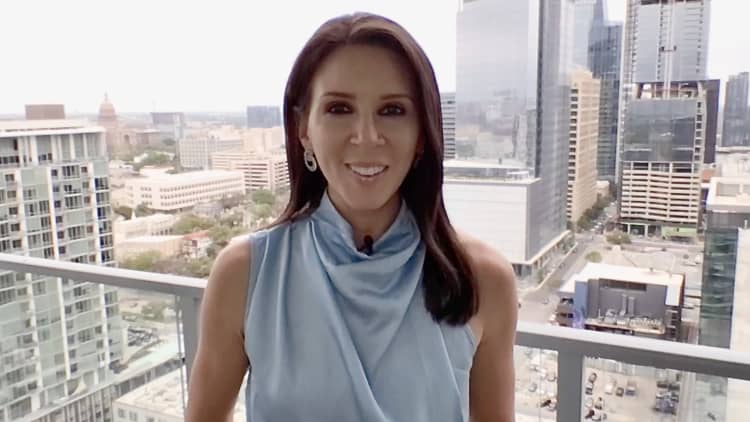
Trump also expressed concern over the U.S. launching a central bank digital currency, or CBDC — that is, a digital coin issued by the Federal Reserve that could grant the government greater access to personal spending data.
Bitcoin is seen by many in the industry as the antithesis of a CBDC because it is a censorship-resistant and borderless currency that is not centrally issued, nor constrained by geographic or governmental boundaries. Trump wrote that bitcoin mining may be the “last line of defense against a CBDC.”
When asked about the Tuesday evening meeting, Brian Hughes, senior advisor to the Trump administration, told CNBC that “crypto innovators and others in the technology sector are under attack from Biden and Democrats” and that “while Biden stifles innovation with more regulation and higher taxes, President Trump is ready to encourage American leadership in this and other emerging technologies.”
Trump’s pro-crypto campaign platform comes as polling data shows that crypto matters more to the voting public now than in past presidential elections. A Harris poll funded by the spot bitcoin ETF issuer Grayscale found that one in three U.S. voters will consider a candidate’s crypto stance before casting a ballot.
Bitcoin has also seen its place as an asset class solidified in the traditional financial markets through the adoption of spot bitcoin exchange-traded funds. Since launching in January in the U.S., these funds have collectively brought in roughly $60 billion in assets under management as institutions and an entirely new set of investors gain exposure to the digital asset class for the first time.
So far this year, crypto-friendly venture capital firm Andreessen Horowitz; centralized crypto exchange Coinbase; veteran venture capitalist Ron Conway; venture capital executive Fred Wilson; tech executives Cameron and Tyler Winklevoss; and Ripple, a crypto solutions business, have all donated tens of millions of dollars to Fairshake, according to the pro-crypto super PAC.
Meanwhile, bitcoin miners who met with Trump this week tell CNBC they have been trying and failing for years to get into a room with President Biden. Under the current administration, the U.S. Treasury Department has looked to impose a 30% tax squarely on the cost of electricity used in crypto-related mining operations.
Multiple attendees described the unfettered access to the presumptive Republican nominee to be a welcome change from the status quo.
CNBC reached out to the White House to ask about the administration’s perceived reluctance to engage with bitcoin miners but did not immediately hear back.
“He walked around and shook hands with everyone in the room, talked about where they’re from, and thanked us for being there,” Schultz said of Trump’s demeanor during the meeting on Tuesday night, adding, “He’s smart as a whip. Not one note for that entire interaction.”
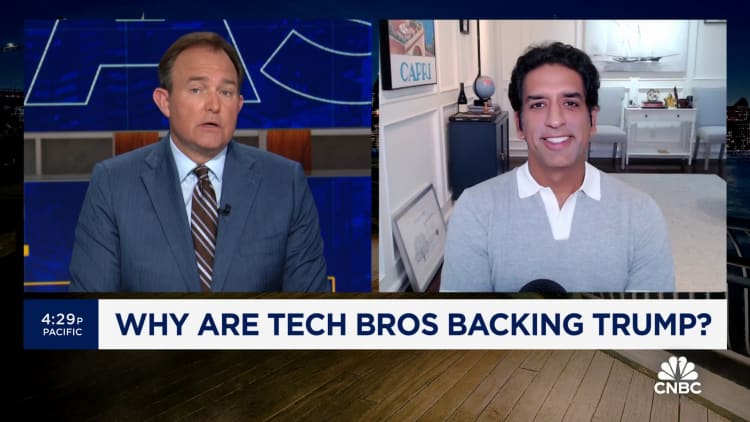
Tuesday night at Mar-a-Lago
It was a no comms and no photographer policy at the mining roundtable on Tuesday.
Attendees, who had an expansive view over thunderstorms on the Atlantic coast that night, forfeited their smartphones to a Radio Frequency Identification pouch that blocked incoming and outgoing signals. As participants lost their sense of time, they convened under a large chandelier listening to the former president actively engage on the nuances of America’s energy deficit, bitcoin mining, and AI — without the aid of a teleprompter — for the duration of the conversation.
“He just really knew his stuff,” said Browder of Marathon.
“We were very impressed by how in the weeds he was on some pretty dense topics when you’re talking about artificial intelligence, data centers, energy buildout, and transmission,” continued Browder, who added that it was the first time bitcoin miners have formally met with the former president to discuss the industry.
CNBC spoke to half a dozen miners who were at the meeting, all of whom converged on the same conclusion; that Trump understood how bitcoin mining complements some of the bigger macro challenges that the U.S. has as a country, most notably the imminent need for the rapid buildout of energy production and transmission infrastructure amid the booming interest in generative AI technologies.

Schultz of the NASDAQ-traded mining firm CleanSpark said Trump came in, sat down, and got right down to business after grabbing a Diet Coke and a cookie from the four-plate spread of macadamia, chocolate chip, and oatmeal varieties adorning the table.
Trump “actually believes that bitcoin provides value,” said CleanSpark’s executive chairman. “I went there feeling like this is going to be a campaign rally; a highly politicized campaign rally.”
“It was anything but a fundraiser pitch,” continued Schultz.
Exacore president Chris Cook echoed that takeaway, telling CNBC that Trump was “very knowledgeable on the subject” of bitcoin mining and that he understood the significance of the job creation that could come from supporting big data mining in the U.S.
“We’re able to train people that have been displaced from industries that may have evolved or no longer exist — and train them to operate and work in a bitcoin mine,” said Cook. “The coal industry, for example. There’s not nearly as many jobs there anymore, and we can teach them to operate a bitcoin mine.”
Amanda Fabiano, a veteran of the mining industry who is on the board of a publicly traded mining firm and the founder of Fabiano Consulting, came away with a similar impression. She says that the former president seemed especially interested in hearing more about the substantial job creation that the mining industry generates in remote parts of the country in sectors ranging from technology to construction, as well as the financial incentive it provides for the buildout of infrastructure to harness the power of stranded renewable energy sources.
Marathon’s Browder says that a lot of the places where they mine bitcoin are in rural areas of the United States that have been left behind, whether it was a town once known for its coal plants, or factories that have shuttered altogether.
“We’ve come in and revitalized those areas, and I think that resonates very well with former President Trump, his team, and obviously, a lot of voters in rural America that support him,” said Browder.
Exacore’s Cook says the kind of job creation they’re talking about extends well beyond staffing a mine. The mining industry justifies the economic investment to create new power generation infrastructure, which then creates the need for thousands of new roles to make that buildout happen.
“That’s where you’ve got all these ancillary jobs; it’s not just the bitcoin mining directly,” said Cook.
“I think we can about double the amount of power generation in the U.S., which would, by my estimate, add two to three percent to GDP and create close to a million jobs,” continued Cook.
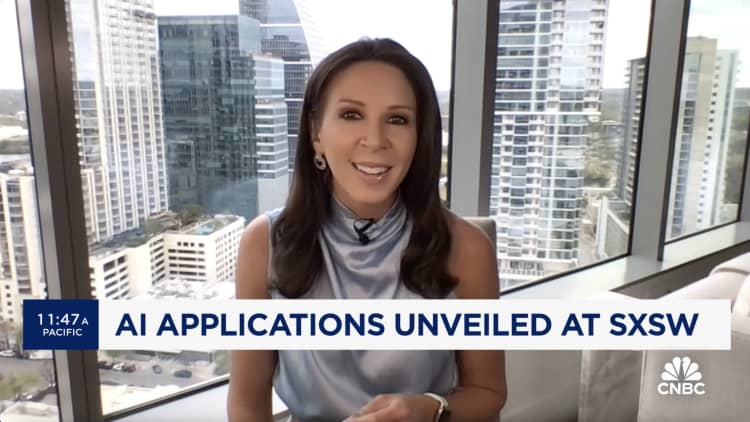
“He’s been speaking more about energy independence, jobs, and technology,” Marathon Digital’s Browder said of Trump. “I think it’s the broader context of what’s happening around the world with the power competition between the U.S. and China.”
Across the U.S. are untapped and stranded sources of renewable energy. In West Texas, for example, there is an idyllic overlap of sun quality and wind speed. But a lot of that renewable energy is concentrated in remote parts of the state, and without a financial incentive, there is little reason to build out renewable infrastructure to harness this energy.
Enter bitcoin miners.
Some have opted to build mining sites where wind and solar are abundant and the transmission system is constrained, meaning that power wants to flow down the line, but the lines are full. These mines act like a large power station but in reverse. The mines will absorb abundant renewable energy at times when supply outpaces demand, thereby monetizing these assets when there are no other buyers. And on the flip side, the mines will incrementally ramp down their energy intake, as demand on the grid rises.
Adding bitcoin miners to the portfolio of energy buyers has helped to improve the core economics of renewable power production. Providing demand to these semi-stranded assets essentially makes renewables economically viable when they might not be otherwise.
Schultz noted, however, that Trump isn’t a huge fan of wind energy, because it’s too expensive to build, maintain, and dispose of when the components go bad, so he doesn’t see it as a long-term solution, but he is apparently a fan of renewables otherwise.
“It’s a race against the rest of the world building this infrastructure, so we don’t want the United States to be left behind in this regard,” added Riot’s Les.
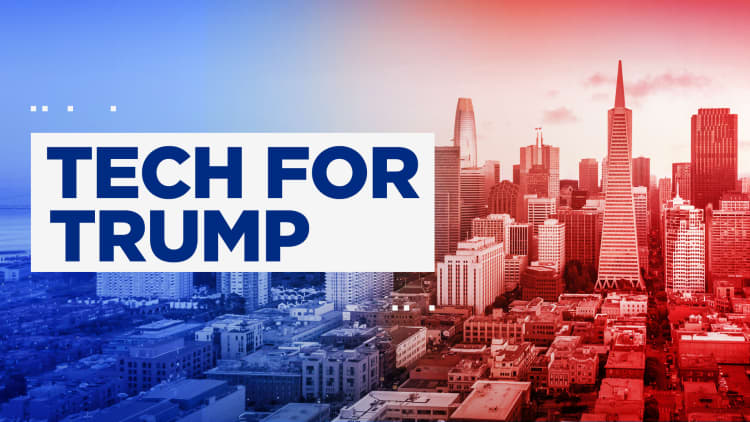
AI meets bitcoin mining
Demand for AI compute and infrastructure surged after OpenAI unveiled ChatGPT in November 2022, setting off a rush of investment in AI models and startups.
Data centers alone could use up to 9% of the country’s power by the end of the decade, according to the Electric Power Research Institute. That’s more than double today’s demand across the U.S today.
“When you talk about the grid and energy production, a lot of the conversation was around AI and the amount of energy that’s going to be needed there,” said Marathon’s Browder.
Exacore’s Cook noted that Trump “was very much aware of how much energy AI needs.”
Bitcoin miners do two things especially well.
When miners partner with utility companies, they turn off their data centers almost instantly when there is too much power demand and give energy back. This helps to stabilize the grid, and miners are then compensated for curtailing their consumption.
In some cases, bitcoin miners also make it more cost effective to build the infrastructure necessary to bring renewables onto the grid.
Both those things are important when it comes to building out energy infrastructure across the country.
“These are synergies that I think the Trump administration understands very well in this context of, we need more energy, and there’s a grid power competition between the U.S. and China,” said Marathon’s Browder.
“Those are the high level pieces that I think the Trump administration are thinking about and developing policies around,” added Browder. “They’re very forward thinking.”
In the closed-door meeting, Trump also spoke about the fact that fossil fuels are likely to make a comeback as they are in several other countries, due to the demand for increased energy capacity for data centers around the world.
Tapping into nuclear energy is seen by many as a cleaner alternative and the answer to meeting these ballooning power demands.
Microsoft co-founder Bill Gates and Amazon founder Jeff Bezos have invested in nuclear plants in recent years, as has Sam Altman, who is best known for being the CEO of his $80 billion start-up OpenAI. Altman told CNBC last year that he’s a big believer in nuclear when it comes to serving the needs of AI workloads. He’s also backed two different nuclear power start-ups, one of which just listed on the New York Stock Exchange in May.
“I don’t see a way for us to get there without nuclear,” Altman said. “I mean, maybe we could get there just with solar and storage. But from my vantage point, I feel like this is the most likely and the best way to get there.”
TeraWulf powers its mining sites with nuclear energy, and is looking to get into machine learning.
The company’s chief strategy officer, Kerri Langlais, tells CNBC that whether it’s bitcoin mining or AI, the reliance solely on intermittent renewables, whether it be solar or wind, which are fluctuating, is not going to be enough to support the tremendous projections for the amount of energy that is going to be required to support build out over the next five to ten years.
“We definitely talked about nuclear,” Langlais said of the sit-down with Trump.
“We need to think about that in the context of how we’re operating, how the grid is operating, the role that bitcoin mining plays in that, because we can provide a pretty valuable service to the grid in that sort of fluctuating supply environment.”
— CNBC’s Brian Schwartz contributed to this report.
Bitcoin
Grayscale Unveils Bitcoin Mini Trust ETF
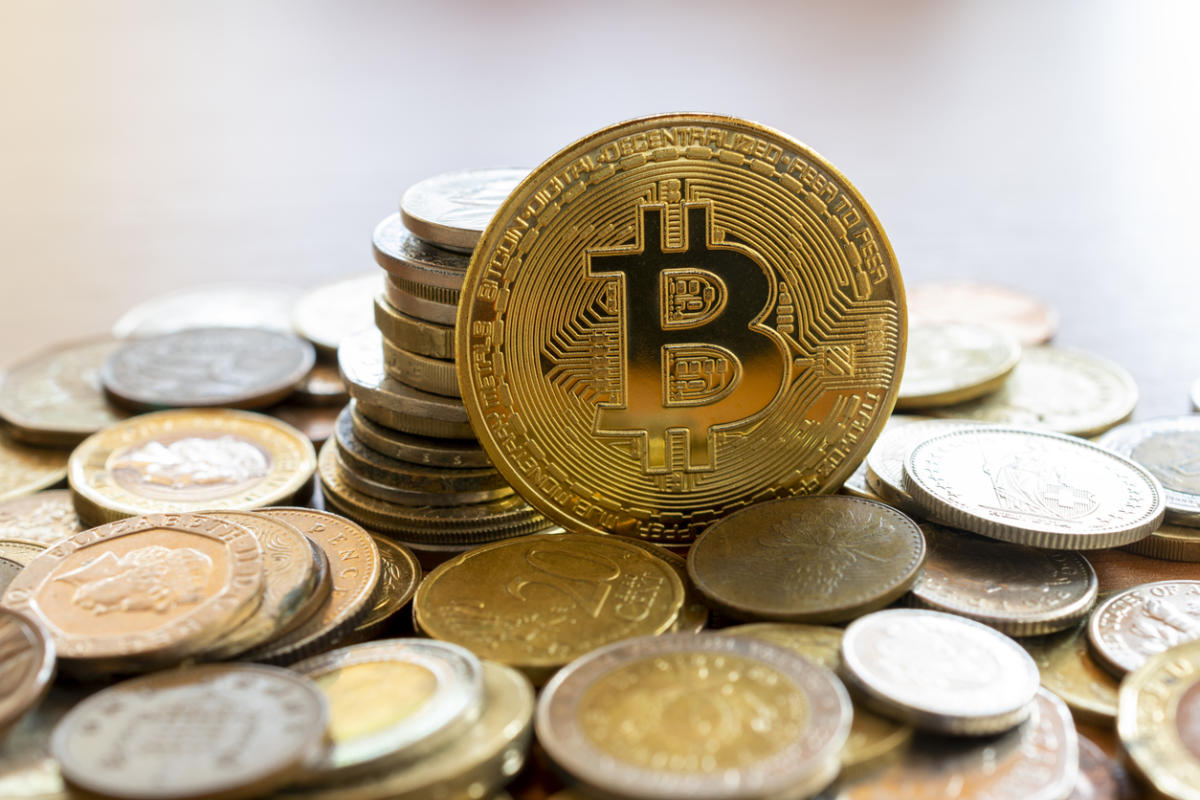
Bitcoin Currency
Grayscale Investments The Bitcoin Mini Trust began trading on Wednesday with a 0.15% expense ratio, offering a lower-cost option for bitcoin exposure in the market.
The Mini Trust, which has the symbol BTC and trades on NYSE Arca, is structured as a spin-off of the Grayscale Bitcoin Trust (GBTC). New shares will be distributed to existing GBTC shareholders with the fund contributing a portion of its bitcoin holdings to the new product. According to a company press releaseBTC’s S-1 registration statement became effective last week.
“The Grayscale team has believed in the transformative potential of Bitcoin since the initial launch of GBTC in 2013, and we are excited to launch the Grayscale Bitcoin Mini Trust to help further lower the barrier to entry for Bitcoin in an SEC-regulated investment vehicle,” said David LaValle, Senior Managing Director and Head of ETFs at Grayscale.
The Bitcoin Mini Trust’s debut comes amid growing interest in ETFs based on the current price of the two largest cryptocurrencies by market cap, bitcoin and ether. Spot bitcoin ETFs have generated nearly $18 billion in inflows since the first ones began trading on Jan. 11, though GBTC has lost nearly $19 billion in assets.
This fund differs from other funds because it is a conversion of an existing fund and has a 1.5% fee, the highest among spot bitcoin products that have received SEC approval this year.
Mini Bitcoin Trust Low Fee
On a Post X On Wednesday, Bloomberg senior ETF analyst Eric Balchunas noted the Bitcoin Mini Trust’s “lowest fee in the category…”
“[Important] to recognize how incredibly cheap 15bps is — about 10x cheaper than spot ETFs in other countries and other vehicles,” Balchunas wrote, adding that this pricing strategy reflects the competitive nature of the U.S. ETF market, which he referred to as the “ETF Terrordome.”
“This is what Terrordome does to fund [cost]. It reaches 1.5% [and] end in 0.15%, how to go from [a] country club to the jungle. But that’s why all the flows are here, investor paradise,” he noted.
Read more: Spot Bitcoin ETF Inflows Hit Daily High of Over $1 Billion
Bitcoin was recently trading at around $66,350, virtually flat since U.S. markets opened on Wednesday.


Grayscale also offers two spot Ethereum ETFs, the Grayscale Ethereum Trust (ETHE) and the Grayscale Ethereum (ETH) Mini Trustwhose performance is based on ETHE. ETHE outflows exceeded $1.8 billion in its first six days of trading, while ETH added more than $181 million in the same period, according to Farside. The remaining seven ETFs generated about $1.2 billion in inflows.
The story continues
Read more: Spot Ethereum ETFs Approved to Start Trading
Permanent link | © Copyright 2024 etf.com. All rights reserved
Bitcoin
Bitcoin (BTC) Price Drops Below $65K After FOMC as Middle East Tensions Rise

Cryptocurrencies fell sharply on Wednesday as rising geopolitical risks captivated investors’ attention following the conclusion of the Federal Reserve’s July meeting.
Bitcoin (BTC) fell to $64,500 from around $66,500, where it traded following Federal Reserve Chairman Jerome Powell’s press conference and is down more than 2% in the past 24 hours. Major altcoins including ether (ETH)sunbathing (SUN)Avalanche AVAX (AVAX) and Cardano (ADA) also fell, while Ripple’s XRP saved some of its early gains today. The broad cryptocurrency market benchmark CoinDesk 20 Index was 0.8% lower than 24 hours ago.
The liquidation happened when the New York Times reported that Iran’s leaders have ordered retaliation against Israel over the killing of Hamas leader Ismail Haniyeh in Tehran, raising the risk of a wider conflict in the region.
Earlier today, the Fed left benchmark interest rates unchanged and gave little indication that a widely expected rate cut in September is a given. The Fed’s Powell said that while no decision has been made on a September cut, the “broad sense is that we are getting closer” to cutting rates.
While digital assets suffered losses, most traditional asset classes rose higher during the day. U.S. 10-year bond yields fell 10 basis points, while gold rose 1.5% to $2,450, slightly below its record highs, and WTI crude oil prices rose 5%. Stocks also rallied during the day, with the tech-heavy Nasdaq 100 index rebounding 3% and the S&P 500 closing the session 2.2% higher, led by 12% gains in chipmaker giant Nvidia (NVDA).
The different performances across asset classes could be due to traders’ positioning ahead of the Fed meeting, Zach Pandl, head of research at Grayscale, said in an emailed note.
“Equities may have been slightly underutilized after the recent dip, while bitcoin is coming off a strong period with solid inflows, while gold has recovered after a period of weakness,” he said.
“Overall, the combination of Fed rate cuts, bipartisan focus on cryptocurrency policy issues, and the prospect of a second Trump administration that could advocate for a weaker U.S. dollar should be viewed as very positive for bitcoin,” he concluded.
UPDATE (July 31, 2024, 21:30 UTC): Adds grayscale comments.
Bitcoin
Donald Trump’s Cryptocurrency Enthusiasm Is Just Another Scam

Former US President Donald Trump spoke at the Libertarian National Convention in May and lent his a strong support to crypto: “I will also stop Joe Biden’s crusade to crush crypto. … I will ensure that the future of crypto and the future of bitcoin is made in the US, not taken overseas. I will support the right to self-custody. To the 50 million crypto holders in the country, I say this: With your vote, I will keep Elizabeth Warren and her henchmen out of your bitcoin.”
Former US President Donald Trump spoke at the Libertarian National Convention in May and lent his a strong support to crypto: “I will also stop Joe Biden’s crusade to crush crypto. … I will ensure that the future of crypto and the future of bitcoin is made in the US, not taken overseas. I will support the right to self-custody. To the 50 million crypto holders in the country, I say this: With your vote, I will keep Elizabeth Warren and her henchmen out of your bitcoin.”
Trump continued to court the cryptocurrency industry in the months that followed; he he appeared at the Bitcoin 2024 Conference in Nashville this week, along with independent presidential candidate Robert F. Kennedy Jr.’s parting words to Trump — “Have fun with your bitcoin, your cryptocurrency and whatever else you’re playing with” — were less than enthusiastic, but the industry itself remains packed with ardent Trump supporters.
This turnaround came as a surprise, given Trump’s previous strong opposition to cryptocurrency. When Facebook was floating its Libra cryptocurrency in 2019, Trump tweeted: “I am not a fan of Bitcoin and other cryptocurrencies, which are not money, and whose value is highly volatile and based on thin air.” Former national security adviser John Bolton’s White House memoir, The Room Where It Happened, quotes Trump as telling Treasury Secretary Steven Mnuchin: “Don’t be a trade negotiator. Go after Bitcoin.” [for fraud].” In 2021, Trump counted Fox Business that bitcoin “just looks like a scam. … I want the dollar to be the world’s currency.”
Why the change? There doesn’t seem to be any crypto votes. Trump’s “50 million” number comes from a poorly sampled push survey by cryptocurrency exchange Coinbase which claimed 52 million cryptocurrency users in the United States starting in February 2023. But one survey A survey conducted last October by the US Federal Reserve showed that only 7% of adults (about 18.3 million people) admitted to owning or using cryptocurrencies — down from 10% in 2022 and 12% in 2021. Many of these people are likely wallet owners who were left holding the bag after crypto plunged in 2022 — and are not necessarily new fans.
What Trump wants from the cryptocurrency industry is money. The cryptocurrency industry has already raised more than US$ 180 million to run in the 2024 US elections through his super PACs Fairshake, Defend American Jobs and Protect Progress.
Fairshake spent $10 million on taking Rep. Katie Porter in the primary battle for Dianne Feinstein’s California Senate seat by funding Porter’s pro-crypto rival Adam Schiff. This put $2 million to knock out Rep. Jamaal Bowman in the Democratic primary for New York’s 16th District in favor of pro-crypto George Latimer. In the Utah Senate Republican primary, Rep. John Curtis defeated Trent Staggs with the help of $4.7 million from Defend American Jobs. In Alabama’s House District 2, the majority of campaign expenses came from the cryptocurrency industry.
Fairshake is substantially financed by Coinbase, cryptocurrency issuer Ripple Labs, and Silicon Valley venture capital firm Andreessen Horowitz, or a16z. Silicon Valley was awash in cryptocurrencies during the 2021 bubble, and a16z in particular continues to promote blockchain startups to this day — and still holds a huge amount of bubble crypto tokens that he wishes he could cash in on.
Many in Silicon Valley would like an authoritarian who they think will let them run wild with money — while bailing them out in tough times. Indeed, Trump promised Bitcoin 2024 participants that he hold all bitcoins that the United States acquires. (Never mind that it is usually acquired as the proceeds of crime.) Silicon Valley explicitly sees regulation of any kind as its greatest enemy. Three a16z manifestos — “Politics and the Future” It is “The Techno-Optimist Manifesto” and 2024 “The Small Tech Agenda—describe co-founders Marc Andreessen and Ben Horowitz’s demands for a technology-powered capitalism unhindered by regulation or social considerations. They name “experts,” “bureaucracy,” and “social responsibility” as their “enemies.” Their 2024 statement alleges that banks are unfairly cutting off startups from the banking system; these would be crypto companies funded by a16z.
Trump’s vice presidential pick, Senator J.D. Vance, is a former Silicon Valley venture capitalist. He was once employed by Peter Thiel, who bankrolled Vance’s successful 2022 Senate run; Vance has been described as a “Thiel creation”. He has increased support for the Trump ticket among his venture capital associates. Vance is a bitcoin holder and a frequent advocate of encryption. He recently released a draft bill to review how the Securities and Exchange Commission (SEC) and the Commodity Futures Trading Commission (CFTC) control crypto assets. In 2023, he circulated a bill to prevent banks from cutting out cryptocurrency exchanges.
Minimal regulation has been tried before. It led to the wild exuberance of the 1920s, which ended with the Black Tuesday crash of 1929 and the Great Depression of the 1930s. Regulators like the SEC were put in place during this era to protect investors and transform the securities market from a jungle into a well-tended garden, leading to many prosperous and stable decades that followed.
Crypto provides the opposite of a stable and functional system; it is a practical example of how a lack of regulation allows opportunists and scammers to cause large-scale disasters. The 2022 Crypto Crash repeated the 2008 financial crisis in miniature. FTX’s Sam Bankman-Fried was feted as a financial prodigy who would perform economic miracles if you just gave him carte blanche; he ended up stealing billions of dollars of customers’ money, destroying the lives of ordinary people, and is now in a prison cell.
U.S. regulators have long been concerned about the prospect of cryptocurrency contagion to the broader economy. Criminal money laundering is rampant in cryptocurrency; even the Trump administration has made rules in December 2020 to reduce the risk of money laundering from crypto. Meanwhile, the crypto industry has persistently tried to infiltrate systemically risky corners of the economy, such as pension funds.
Four U.S. banks collapsed during the 2023 banking crisis, the first since 2020. Two of them, Silvergate Bank and Signature Bank, were deeply embedded in the crypto world — Silvergate in particular appears to have collapsed directly from its heavy reliance on FTX and failed a few months after that. Silicon Valley Bank was not involved in crypto but collapsed due to a run on the bench due to panic among venture capital deposit holders, particularly Thiel’s Founders Fund.
Project 2025the Heritage Foundation mammoth conservative wish list The plan, which Trump and Vance have both endorsed and tried to distance themselves from at various times, emphasizes the importance of party loyalists, noting especially financial regulation. The plan recommends replacing as much of the federal bureaucracy as possible with loyalists and “trusted” career officials rather than nonpartisan “experts.” Vance defended in 2021 that Trump should “fire every mid-level bureaucrat, every civil servant in the administrative state” and “replace them with our people.” Loyalty will likely trump competence.
Crypto is barely mentioned directly in Project 2025 — suggesting it has little active support among the broader conservative coalition. But near the end of the manifesto is a plan to dismantle most U.S. financial regulations and investor protections put in place since the 1930s, suggesting the exemption the crypto industry seeks from current SEC and CFTC regulations.
Bitcoin, the first cryptocurrency, started as an ideological project to promote a strange variant of Murray Rothbard’s anarcho-capitalism and the Austrian gold-backed economy—the kind we abandoned to escape the Great Depression. Crypto quickly co-opted the “end of the Fed” and “establishment elites” conspiracy theories of the John Birch Society and Eustace Mullins. It’s a way for billionaire capitalists like Thiel, Andreessen and Elon Musk to claim they’re not part of the so-called elite.
If a second Trump administration were to limp along with financial regulators and allow cryptocurrencies to have free rein, it could help foster the collapse of the U.S. economy that bitcoin claimed to prevent. But Trump is more likely to be happy to take the crypto money and run.
Bitcoin
Trump’s Bitcoin (BTC) Reserve Plan Seen as Just a ‘Small Token Stash’
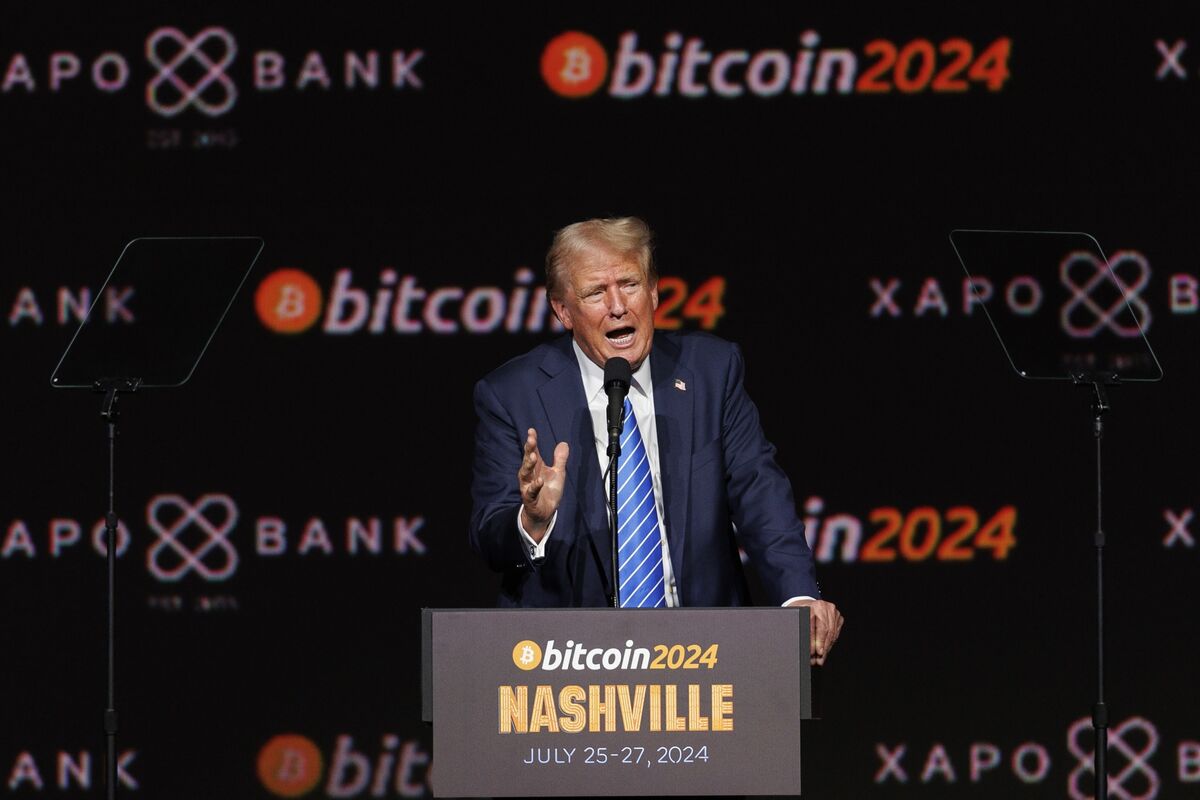
Donald Trump’s recent promise to create a “strategic national stockpile of Bitcoin” may not turn out to be as big a commitment as the hype surrounding the announcement makes it seem.
“Trump’s proposal is extremely modest,” said George Selgin, director emeritus of the Center for Monetary and Financial Alternatives at the Cato Institutea Washington-based public policy group. “It doesn’t have much economic implication.”
-

 Ethereum12 months ago
Ethereum12 months agoEthereum Posts First Consecutive Monthly Losses Since August 2023 on New ETFs
-

 Regulation12 months ago
Regulation12 months agoCryptocurrency Regulation in Slovenia 2024
-

 News12 months ago
News12 months agoNew bill pushes Department of Veterans Affairs to examine how blockchain can improve its work
-

 Regulation12 months ago
Regulation12 months agoThink You Own Your Crypto? New UK Law Would Ensure It – DL News
-

 Regulation12 months ago
Regulation12 months agoUpbit, Coinone, Bithumb Face New Fees Under South Korea’s Cryptocurrency Law
-

 Regulation12 months ago
Regulation12 months agoA Blank Slate for Cryptocurrencies: Kamala Harris’ Regulatory Opportunity
-

 Regulation12 months ago
Regulation12 months agoBahamas Passes Cryptocurrency Bill Designed to Prevent FTX, Terra Disasters
-

 Regulation12 months ago
Regulation12 months agoIndia to Follow G20 Policy for Cryptocurrency Regulation: MoS Finance
-

 News1 year ago
News1 year ago“Captain Tsubasa – RIVALS” launches on Oasys Blockchain
-

 Ethereum1 year ago
Ethereum1 year agoComment deux frères auraient dérobé 25 millions de dollars lors d’un braquage d’Ethereum de 12 secondes • The Register
-

 News12 months ago
News12 months agoEU supports 15 startups to fight online disinformation with blockchain
-

 News1 year ago
News1 year agoSolana ranks the fastest blockchain in the world, surpassing Ethereum, Polygon ⋆ ZyCrypto













